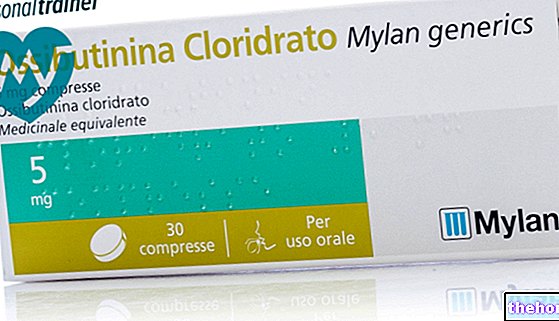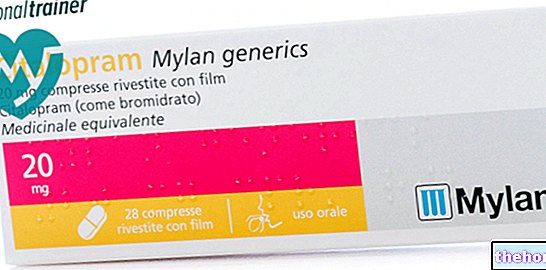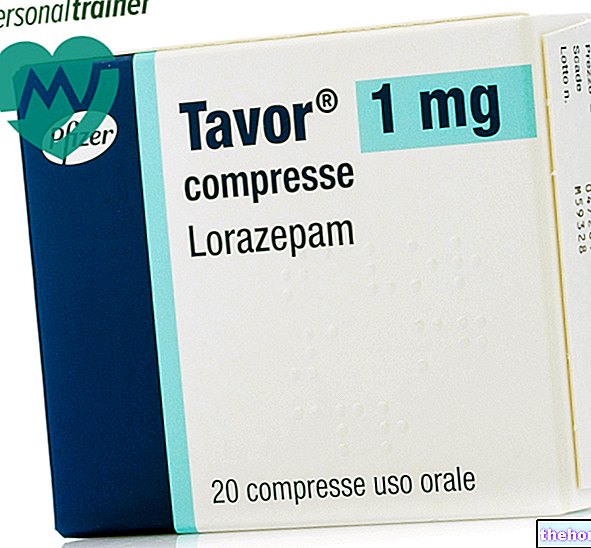Active ingredients: Octatropine methylbromide, Diazepam
VALPINAX 2 g / 100 ml + 0.25 g / 100 ml Oral drops, solution
VALPINAX 4 g / 100 ml + 0.25 g / 100 ml Oral drops, solution
Valpinax package inserts are available for pack sizes: - VALPINAX 2 g / 100 ml + 0.25 g / 100 ml Oral drops, solution, VALPINAX 4 g / 100 ml + 0.25 g / 100 ml Oral drops, solution
- VALPINAX 20 mg + 2.5 mg Film-coated tablets, VALPINAX 40 mg + 2.5 mg Film-coated tablets
Why is Valpinax used? What is it for?
VALPINAX contains two active ingredients: octatropine methylbromide, which acts on the smooth muscles of the gastrointestinal tract by exerting an antispastic action and diazepam, a substance with an anxiolytic and muscle relaxant action.
VALPINAX is used in adults and children, after one year of age, to treat spastic and painful manifestations of the gastrointestinal tract related to anxiety.
Contraindications When Valpinax should not be used
Do not take VALPINAX
- if you are allergic to the active substances or any of the other ingredients of this medicine (listed in section 6)
- if you suffer from glaucoma (an eye disease caused by increased pressure in the eye)
- if you suffer from prostatic hypertrophy or other causes of urinary obstruction
- if you suffer from myasthenia gravis (a disease characterized by muscle weakness)
- if you suffer from obstructive pathologies of the gastrointestinal system (paralytic ileus, achalasia, pyloro-duodenal stenosis)
- if you are an elderly or debilitated patient with intestinal atony
- if you have severe ulcerative colitis and toxic mega-colon
- in conditions of cardiovascular instability in case of acute bleeding
- if you suffer from severe respiratory failure
- if you suffer from severe hepatic insufficiency
- if you suffer from obstructive sleep apnea syndrome (a condition characterized by pauses in breathing during sleep) -? during the first trimester of pregnancy
- if you are breast-feeding.
Children
Do not give this medicine to your child if they are less than one year of age because safety and efficacy have not been established in this age group.
Note: it is possible to use VALPINAX in children, starting from one year of age, only in the dosage 2 g / 100 ml + 0.25 g / 100 ml Oral drops, solution.
Precautions for use What you need to know before taking Valpinax
Talk to your doctor or pharmacist before taking VALPINAX.
Please tell your doctor about any other conditions or illnesses you suffer from. Your doctor may need to take this into account. In particular, tell your doctor if you suffer from:
- ulcerative colitis
- liver or kidney disease
- hyperthyroidism
- coronary heart disease, congestive heart failure, cardiac arrhythmias
It is important that you tell your doctor if you have a history of drug and / or alcohol abuse. high blood pressure non-obstructive prostatic hypertrophy hiatal hernia with reflux esophagitis.
ATTENTION
- The diazepam contained in VALPINAX can induce physical and psychological dependence on the drug. The risk increases with high doses and prolonged periods of treatment.
- When you stop treatment, especially if abruptly, you may experience the same symptoms that required treatment with this medicine, but in an aggravated form (see Possible side effects). It is very important that you strictly follow your doctor's instructions and do not stop treatment or change your dose without first checking with him.
- Contact your doctor immediately if you experience symptoms such as restlessness, anxiety, agitation, irritability, aggression, disappointment, anger, nightmares, hallucinations, psychosis, behavioral changes, mood changes or sleep disturbances during treatment with VALPINAX.
Checks
If you are a sportsman who has to carry out a doping control, you should know that VALPINAX could give a positive result.
Interactions Which medications or foods can modify the effect of Valpinax
Tell your doctor or pharmacist if you are taking, have recently taken or might take any other medicines.
Some medicines can affect the way VALPINAX works, or VALPINAX can reduce the effectiveness of other medicines taken at the same time.
Tell your doctor if you are taking any of the following medicines:
- Medicines to treat psychosis (e.g. haloperidol, chlorpromazine)
- Medicines to treat depression (e.g. clomipramine, imipramine and desipramine)
- Medicines for the treatment of pain (Non-steroidal anti-inflammatory drugs (NSAIDs) such as ibuprofen, acetylsalicylic acid)
- Medicines to treat severe pain (e.g. tramadol)
- Medicines to treat anxiety (eg alprazolam, brotizolam)
- Medicines to treat epilepsy (eg lamotrigine, phenytoin, phenobarbital)
- Medicines used to induce anesthesia
- Medicines for the treatment of allergies
- Medicines for the treatment of Parkinson's disease (amantadine).
VALPINAX with food, drink and alcohol
You can take VALPINAX with or without food. You must absolutely avoid the consumption of alcohol during treatment with VALPINAX because the sedative effect of the drug may increase.
Warnings It is important to know that:
Pregnancy
Do not take VALPINAX during the first trimester of pregnancy.
Your doctor may prescribe this medicine after the third month of pregnancy only if clearly needed. However, you should be aware that if you take VALPINAX during the last months of pregnancy or during labor at high doses, your baby may experience some symptoms at birth, such as too low body temperature, hypotonia and moderate respiratory depression.
Also, if you take VALPINAX chronically during the last few months of your pregnancy, your baby may develop physical dependence and withdrawal symptoms after birth.
Feeding time
The active substance diazepam contained in this medicine passes into breast milk, with the risk of effects on the baby, therefore do not take VALPINAX if you are breastfeeding.
Driving and using machines
VALPINAX affects the ability to drive and use machines. It is therefore possible that your ability to drive or operate machinery will be impaired.
VALPINAX contains ethyl alcohol
This medicine contains small amounts of ethanol (alcohol) less than 100 mg per dose.
Dose, Method and Time of Administration How to use Valpinax: Posology
Always take this medicine exactly as your doctor has told you. If in doubt, consult your doctor or pharmacist.
Adults
VALPINAX 2 g / 100 ml + 0.25 g / 100 ml:
the recommended dose is 25-30 drops 3 times a day.
VALPINAX 4 g / 100 ml + 0.25 g / 100 ml:
the recommended dose is 25-30 drops 2 times a day.
Elderly patients
Your doctor will determine the appropriate dose and consider a reduction in the above doses.
Use in children (over one year of age)
VALPINAX 2 g / 100 ml + 0.25 g / 100 ml:
the recommended dose is 10-15 drops 3 times a day.
Note: it is possible to use VALPINAX in children, starting from one year of age, only in the dosage 2 g / 100 ml + 0.25 g / 100 ml Oral drops, solution
Instructions for Use
To open the bottle, press the cap and unscrew at the same time.
Recap the bottle after use.
Make sure the bottle is closed childproof (if you unscrew the cap without pressing it should hear a click).
Overdose What to do if you have taken too much Valpinax
If you take more VALPINAX than you should
If you accidentally take more VALPINAX than prescribed, contact your doctor immediately or go to the nearest hospital emergency room, even if you notice no signs of being unwell.
Some symptoms of overdose consist of urinary retention, dry mouth, increased heart rate, transient visual disturbances, redness of the skin, inhibition of gastrointestinal motility, arousal state, drowsiness, confusion, drowsiness, difficulty moving, low blood pressure blood pressure, respiratory depression, rarely coma and, very rarely, death.
If you forget to take VALPINAX
Do not take a double dose to make up for a forgotten dose and continue treatment as usual.
If you stop taking VALPINAX
Do not stop taking VALPINAX without your doctor's consent. Your doctor will gradually reduce the dose.
If you stop taking VALPINAX, especially if abruptly, you may experience withdrawal symptoms. The risk is higher when VALPINAX has been used for long periods or when the dose is reduced too quickly.
If you have any further questions on the use of this medicine, ask your doctor or pharmacist.
Side Effects What are the side effects of Valpinax
Like all medicines, this medicine can cause side effects, although not everybody gets them.
Uncommon side effects (may affect up to 1 in 100 patients):
- drowsiness
- dizziness
- muscle relaxation, fatigue, muscle weakness
- excessive sedation
Very rare side effects (may affect up to 1 in 10,000 patients):
- constipation
- lack of muscle coordination (ataxia)
- changes in libido
- confusion, depression, states of anxiety and excitement paradoxes
- double vision (diplopia)
- speech disorders (dysarthria)
- rash
- tremor
- low blood pressure
- incontinence or urinary retention
- jaundice, a condition characterized by yellowing of the skin or whites of the eyes.
The active substance diazepam contained in this medicine may cause the following side effects:
- amnesia
- depression and reactions such as restlessness, agitation, irritability, aggression, disappointment, anger, nightmares, hallucinations, psychosis, behavioral changes. These reactions are more common in the elderly.
- physical and / or psychic drug dependence. Discontinuation of therapy may cause rebound or withdrawal phenomena such as headache, muscle aches, extreme anxiety, tension, restlessness, confusion and irritability (see Warnings and Precautions). In severe cases the following symptoms may occur: derealization, depersonalization, numbness and tingling of the extremities, hypersensitivity to light, noise and physical contact, hallucinations or seizures.
Reporting of side effects
If you get any side effects, talk to your doctor or pharmacist. This includes any possible side effects not listed in this leaflet. You can also report side effects directly via the national reporting system at https://www.aifa.gov.it/content/segnalazioni-reazioni-avverse. By reporting side effects you can help provide more information on safety. of this medicine.
Expiry and Retention
Keep this medicine out of the sight and reach of children.
Do not use this medicine after the expiry date which is stated on the carton after EXP. The expiry date refers to the last day of that month.
The shelf life after first opening the bottle is 30 days.
Do not throw away any medicines via wastewater or household waste.Ask your pharmacist how to throw away medicines you no longer use. This will help protect the environment.
Composition and pharmaceutical form
What VALPINAX contains
- The active ingredients are octatropine methylbromide and diazepam. Valpinax 2 g / 100 ml + 0.25 g / 100 ml One bottle of 30 ml contains 0.6 g of octatropin methylbromide and 0.075 g of diazepam. Valpinax 4 g / 100 ml + 0.25 g / 100 ml One bottle of 30 ml contains 1.2 g of octatropin methylbromide and 0.075 g of diazepam.
- The other ingredients are sodium saccharin, propylene glycol, ethyl alcohol.
Description of what VALPINAX looks like and contents of the pack
VALPINAX is a clear colorless solution available in 30 ml dark glass bottles equipped with dropper and cap with child resistant closure.
Source Package Leaflet: AIFA (Italian Medicines Agency). Content published in January 2016. The information present may not be up-to-date.
To have access to the most up-to-date version, it is advisable to access the AIFA (Italian Medicines Agency) website. Disclaimer and useful information.
01.0 NAME OF THE MEDICINAL PRODUCT
VALPINAX
02.0 QUALITATIVE AND QUANTITATIVE COMPOSITION
Valpinax 20 mg + 2.5 mg Film-coated tablets:
Each tablet contains:
active ingredients: octatropine methylbromide 20 mg + diazepam 2.5 mg.
Valpinax 2 g / 100 ml + 0.25 g / 100 ml Oral Drops, Solution:
A 30ml bottle contains:
active ingredients: octatropine methylbromide g 0,6 + diazepam g 0,075.
For the full list of excipients, see 6.1.
03.0 PHARMACEUTICAL FORM
Film-coated tablets.
Oral drops, solution.
04.0 CLINICAL INFORMATION
04.1 Therapeutic indications
Treatment of spastic-painful manifestations, with an anxious component, of the gastrointestinal system.
04.2 Posology and method of administration
Adults:
25-30 drops 3 times a day or 2-3 tablets a day.
Children (over one year of age):
10-15 drops 3 times a day.
Valpinax 2 g / 100 ml + 0.25 g / 100 ml Oral Drops, Solution is not recommended for use in children below 1 year of age due to a lack of data on safety and efficacy.
Do not give the tablets to children.
Senior citizens:
In the treatment of elderly patients, the posology must be carefully established by the doctor who will have to evaluate a possible reduction of the dosages indicated above.
04.3 Contraindications
- Hypersensitivity to the active ingredients or to one of the excipients.
- Glaucoma.
- Prostatic hypertrophy or other causes of obstructive uropathy.
- Myasthenia gravis.
- Paralytic ileus and obstructive pathologies of the gastrointestinal system (such as achalasia, pyloroduodenal stenosis).
- Intestinal atony in elderly or debilitated patients.
- Severe ulcerative colitis and toxic megacolon. State of cardiovascular instability in acute hemorrhage.
- Severe respiratory insufficiency.
- Severe hepatic insufficiency.
- Obstructive sleep apnea syndrome.
- First trimester of pregnancy and lactation (see 4.6).
04.4 Special warnings and appropriate precautions for use
Patients being treated with diazepam or products containing it, as well as with any other psychotropic drug, should refrain from consuming alcoholic beverages while under the influence of the drug, as individual reactions are unpredictable.
Predisposed subjects, if treated with diazepam at high doses and for prolonged periods, may be addictive, as is the case with other psychotropic drugs. This can result in a withdrawal syndrome with psycho-physical symptoms upon discontinuation of treatment.
In case of prolonged treatment it is advisable to check the blood picture and liver function.
The association with other psychotropic drugs requires particular caution and vigilance on the part of the physician, in order to avoid unexpected undesirable effects from interaction.
Due to the highly variable reactivity to psychotropic drugs, the use and posology of diazepam and the products containing it must be based on prudent criteria in elderly, debilitated patients, in those with cerebral organic changes (especially atherosclerotic) or cardiocirculatory insufficiency.
Use with caution in patients with:
- liver or kidney disease;
- ulcerative colitis: large doses can suppress intestinal motility to the point of producing paralytic ileus and the use of this drug can precipitate or aggravate the complications of toxic megacolon;
- hyperthyroidism, coronary heart disease, congestive heart failure, cardiac arrhythmias, hypertension and non-obstructive prostatic hypertrophy;
- hiatal hernia with reflux esophagitis.
In general, with the use of compounds containing benzodiazepines it is necessary to take into account following warnings and precautions:
Dependence
The use of benzodiazepines can lead to the development of physical and mental dependence on these drugs. The risk of addiction increases with dose and duration of treatment, and is greater in patients with a history of drug and alcohol abuse.
Once the physical dependence has developed, the abrupt termination of treatment will be accompanied by withdrawal symptoms. These can consist of headache, body aches, extreme anxiety, tension, restlessness, confusion and irritability.
In severe cases, the following symptoms may occur: de-realization, depersonalization, hyperacusis, numbness and tingling of the extremities, hypersensitivity to light, noise and physical contact, hallucinations or seizures.
Rebound insomnia and anxiety
Upon discontinuation of treatment, a transient syndrome may occur whose symptoms, which led to treatment with benzodiazepines, recur in an aggravated form. It may be accompanied by other reactions, including mood changes, anxiety, restlessness, or sleep disturbances.
Since the risk of withdrawal or rebound symptoms is greater after abrupt discontinuation of treatment, a gradual decrease in dosage is suggested.
Duration of treatment
The duration of treatment should be as short as possible and a gradual withdrawal period should be provided.
It may be useful to inform the patient, when treatment begins, that it will be of limited duration and to explain precisely how the dosage should be progressively decreased.
It is also important that the patient is informed of the possibility of rebound phenomena, thus minimizing the anxiety about these symptoms should they occur when the drug is discontinued.
Amnesia
Benzodiazepines can induce anterograde amnesia. This occurs most often several hours after ingestion of the drug and, therefore, to reduce the risk, it should be ensured that patients can have 7-8 hours of uninterrupted sleep.
Psychiatric and paradoxical reactions
When benzodiazepines are used it is known that reactions such as restlessness, agitation, irritability, aggression, disappointment, anger, nightmares, hallucinations, psychosis, behavioral changes can occur. Should this occur during treatment with Valpinax, its administration should be discontinued. Such reactions are more frequent in the elderly.
Specific groups of patients
Elderly and debilitated patients need to take a reduced dose.
Alcohol and drug abuse
Benzodiazepines should be used with extreme caution in patients with a history of drug and alcohol abuse.
Patients with rare hereditary problems of galactose intolerance, lactase deficiency, or glucose-galactose malabsorption should not take this medicine.
04.5 Interactions with other medicinal products and other forms of interaction
Associated with centrally active drugs, such as neuroleptics, antidepressants, hypnotics, analgesics, anxiolytics / sedatives, antiepileptics, narcotic analgesics, anesthetics, antihistamines, Valpinax can reinforce their sedative action. The association with other psychotropic drugs requires particular caution and vigilance from the part. your doctor to avoid unexpected side effects from interaction.
Association with narcotic analgesics: the euphoria effect can be increased with a consequent increase in psychic dependence.
Combination with drugs that inhibit certain liver enzymes (especially cytochrome P450): the inhibitory effect on liver enzymes may increase the activity of benzodiazepine.
The effects of preparations containing anticholinergics are accentuated by the simultaneous administration of substances belonging to different therapeutic groups but with anticholinergic action such as antihistamines, butyrophenones, phenothiazines, tricyclic antidepressants and amantadine, which therefore must not be taken at the same time.
Concomitant intake with alcohol should be avoided. The sedative effect caused by benzodiazepine may be enhanced when the drug is taken in conjunction with alcohol.
04.6 Pregnancy and breastfeeding
Pregnancy
Do not administer in the first trimester of pregnancy.
In the further period the product must be administered only in case of real need and under the direct supervision of the doctor.
If the product is prescribed to a woman of childbearing age, she must be advised to contact her doctor to suspend the treatment both in case of intending to become pregnant and in case of suspected pregnancy. If, for serious medical reasons, the product is administered during the last period of pregnancy or during labor at high doses, effects on the newborn may occur such as hypothermia, hypotonia and moderate respiratory depression due to the pharmacological action of the drug.
In addition, infants born to mothers who have taken drug combinations containing benzodiazepines chronically during late pregnancy may develop physical dependence and may be at some risk for developing withdrawal symptoms in the postnatal period.
Feeding time
Since benzodiazepines are excreted in breast milk, they should not be given to breastfeeding mothers.
04.7 Effects on ability to drive and use machines
VALPINAX affects the ability to drive or use machines.
04.8 Undesirable effects
Undesirable effects are classified as follows:
Very common:> 1/10
Municipalities:> 1/100,
Uncommon:> 1 / 1,000,
Rare:> 1 / 10,000,
Very rare:
Alterations of the gastrointestinal system
Very rare: constipation
Alterations of the nervous system
Uncommon: somnolence, dizziness;
Very rare: ataxia, libido changes, dizziness
Psychiatric alterations:
Very rare: confusion, depression, states of anxiety and excitement paradoxes
Visual function
Very rare: diplopia
Alterations of the musculoskeletal system and connective tissue
Uncommon: muscle relaxation, fatigue, muscle weakness.
Very rare: dysarthria
Alterations of the skin and subcutaneous tissue:
Very rare: skin rashes
Alterations of a general nature:
Uncommon: excessive sedation
Very rare: tremor
Cardiovascular alterations:
Very rare: hypotension;
Renal and urinary disorders:
Very rare: incontinence or urinary retention
Alterations of the hepatobiliary system:
Very rare: jaundice
Many uncommon side effects occur when the dosage is not adapted to individual needs.
In very rare cases, usually following relative overdose, more relevant symptoms may be observed which disappear spontaneously in a few days, or after dosage adjustment.
Other possible effects of benzodiazepines are:
Amnesia:
Anterograde amnesia can also occur at therapeutic dosages. Amnesic effects may be associated with behavioral changes (see 4.4).
Depression:
A pre-existing depressive state may be unmasked during the use of drug combinations containing benzodiazepines.
Pharmacological combinations containing benzodiazepines or benzodiazepine-like compounds can cause reactions such as restlessness, agitation, irritability, aggression, disappointment, anger, nightmares, hallucinations, psychosis, behavioral changes.
Such reactions can be quite severe. They are more likely in the elderly.
Dependence:
The use of pharmacological combinations containing benzodiazepines (even at therapeutic doses) can lead to the development of physical dependence: discontinuation of therapy can cause rebound or withdrawal phenomena (see 4.4).
Psychic dependence can occur.
04.9 Overdose
Symptomatology: Benzodiazepine overdose usually presents with varying degrees of central nervous system depression ranging from clouding to coma. In mild cases, symptoms include drowsiness, confusion, and lethargy. In severe cases, symptoms may include ataxia, hypotonia, hypotension, respiratory depression, rarely coma and, very rarely, death.
In the event of an overdose of octatropine methylbromide, anticholinergic effects such as urinary retention, dry mouth, tachycardia, mild numbness and transient disturbances of vision, redness of the skin, inhibition of gastrointestinal motility, and more severe disturbances such as arousal state, circulatory disturbances may occur. and respiratory, coma.
Treatment: In the event of oral overdose, gastric lavage, with airway protection, is recommended if the patient is unconscious. The therapy, in addition to the usual measures to support vital functions, consists in the administration of the specific benzodiazepine antagonist, flumazenil, and parasympathomimetics, eg physostigmine or neostigmine 0.5-2.5 mg intravenously or intramuscularly. glaucoma, locally administer pilocarpine Catheterization may be required for urinary retention If necessary, appropriate supportive care should be undertaken.
05.0 PHARMACOLOGICAL PROPERTIES
05.1 Pharmacodynamic properties
Pharmacotherapeutic group: antispasmodics in combination with psycholeptics.
ATC code: A03CB49.
05.2 Pharmacokinetic properties
Ottratropin methylbromide administered orally is poorly absorbed since the duodenum is the gastrointestinal tract where the main absorption occurs. Diazepam is absorbed very rapidly; the peak plasma concentration is reached in about one hour. Octratropin methylbromide is rapidly excreted via the biliary and urinary routes. It does not accumulate even after repeated administration. Diazepam has a mean half-life of approximately 72 hours.
05.3 Preclinical safety data
Pre-clinical data reveal no special hazard for humans based on studies of safety, repeated dose toxicity, genotoxicity, carcinogenicity and reproductive toxicology.
06.0 PHARMACEUTICAL INFORMATION
06.1 Excipients
Film-coated tablets: lactose, pregelatinised starch, talc, magnesium stearate, hypromellose.
Oral drops: sodium saccharin, propylene glycol, ethyl alcohol.
06.2 Incompatibility
None.
06.3 Period of validity
Tablets: 5 years.
Drops: 3 years.
Drops: The shelf life after first opening the bottle is 30 days.
06.4 Special precautions for storage
None.
06.5 Nature of the immediate packaging and contents of the package
Film-coated tablets: box of 30 tablets in blister packs in PVC coupled with aluminum.
Oral drops, solution: 1 bottle in neutral dark glass of 30 ml with dropper and child resistant cap.
06.6 Instructions for use and handling
Oral drops, solution: to open, press on the cap and unscrew. Close after use. The bottle is closed child resistant if you hear a click when you unscrew the cap without pressing it.
07.0 MARKETING AUTHORIZATION HOLDER
CRINOS S.p.A. - Via Pavia, 6 - Milan
08.0 MARKETING AUTHORIZATION NUMBER
Film-coated tablets: A.I.C. n. 021168012
Oral drops, solution: A.I.C. n. 021168048
09.0 DATE OF FIRST AUTHORIZATION OR RENEWAL OF THE AUTHORIZATION
March 1971 / June 2010
10.0 DATE OF REVISION OF THE TEXT
AIFA Resolution of November 2007




























